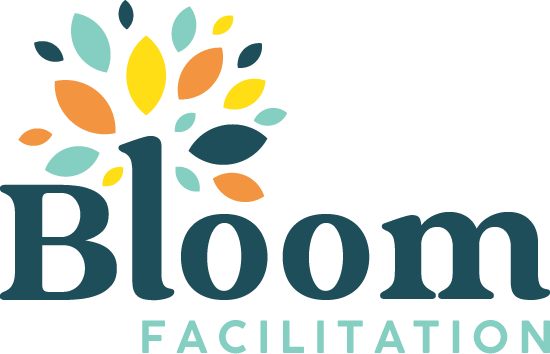Taking time out of your day to day work to gather for an offsite retreat is a great way to build trust and share knowledge. It is also a big investment of time and resources. As a professional facilitator, I have designed and facilitated custom retreats for many years and below I share the key things that you want to think about in the early planning stages of your offsite retreat.
Designing Custom Retreats: A Consultant’s Perspective
When my client expressed a desire to address balance within their department, my mind buzzed with ideas for the upcoming retreat. I envisioned activities like team members literally balancing on stilts, exploring conflicting ideas figuratively, and enjoying catering focused on a balance of macronutrients. Imagery, metaphors, postures, individual, and group exercises – these were just a few elements I considered while crafting a custom retreat experience for their organizational team.
What Does an Organizational Development Consultant Do When Designing a Retreat for Your Organization?
If they’re anything like me, they begin by understanding your key purpose. As the leader or leadership team, it’s your prerogative to define the retreat’s goals.
- What changes do you hope to see by the end?
- Are there any persistent issues or untapped opportunities you wish to address?
- How do you want people to feel when they leave?
Once the overall purpose is clear, the consultant designs the agenda with activities tailored to achieve those goals. Each activity serves a specific purpose, even seemingly simple icebreakers, which are selected thoughtfully to align with the retreat’s objectives and values.
One current trend in facilitation involves activities that encourage personal vulnerability to foster trust. However, not all groups are ready for such exercises. As an experienced facilitator, I always circle back to the purpose and strategize ways to ensure it’s achieved effectively.
Tailoring Activities to Fit the Group Dynamics
Certain exercises may unfold differently depending on the group’s cultural background or composition. Understanding the group’s makeup helps in selecting suitable exercises and providing appropriate guidance to ensure the intended objectives are met.
Moreover, activities can serve as tools to explore various themes. For instance, a simple toolkit with differently shaped blocks can facilitate discussions on collaborative communication or team structuring for efficiency.
Ensuring Participation and Meaningful Debriefs
Individuals are more likely to engage when they see the relevance of an activity to their role or the group’s objectives. Therefore, every activity should allow ample time for debriefing. For each part of the agenda, careful consideration is given to the intended outcome, logistics, and time allocation.
Key Considerations Before Hosting a Retreat
Before reaching out to a consultant or facilitator, consider these three essential steps:
1. Discuss and define the retreat’s key purpose.
2. Determine the best timing for the retreat, considering factors like key personnel availability and budget.
3. Consider the type of facilitation and additional professional support needed, such as meeting logistics and coordination with subcontractors.
Are you exploring possible locations for a future executive or organizational retreat? Flagstaff Arizona is a great location to come and we have a plethora of local resources to support your event. Learn more at Discover Flagstaff.
Are you ready to discuss your ideas for a custom retreat for your group? Let’s chat:
